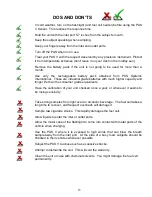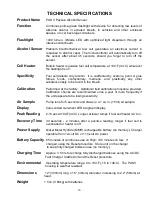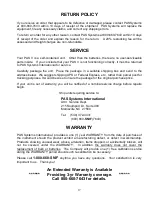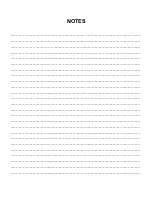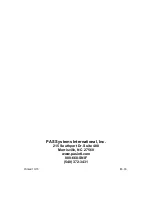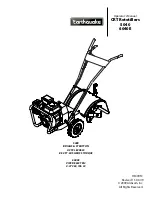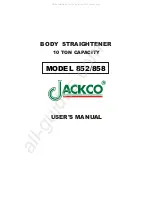
11
The
sensitivity
of the fuel cell is not affected much by temperature. A cold unit
will work just fine, it's simply slower to respond and recover. You don't
have
to
wait for the fuel cell to warm up.
OTHER APPLICATIONS
Alcohol in Enclosed Spaces
The PAS V is sensitive enough to detect background levels of alcohol in
enclosed spaces such as vehicles and rooms. This is useful for detecting
drinking by minors in cars or at social gatherings, without sampling each
individual's breath.
To detect alcohol in an enclosed space, run the PAS sensor to sample air drawn
from anywhere in the space. Just make sure you don't sample fresh air from an
open door or window.
Crash Victims
If a crash victim is unconscious, it can be important to know whether he or she
has been drinking. This will often determine the best course of treatment. Even if
the victim is conscious, it is important to know whether alcohol might have
contributed to the accident. This will influence the course of any investigation.
Any crash victim who is breathing can be checked with the PAS. An
unconscious subject might be exhaling from the nose instead of the mouth, but
the procedure is the same. You only need a few seconds to take the breath
sample, and you can move away while the PAS V display is reaching its peak
level.
Open Beverage Containers/ Spiked
With open container law, the PAS V is invaluable in determining whether a
beverage container has alcohol in it. This is easily done by sampling the air
above the container.
W
W
a
a
r
r
n
n
i
i
n
n
g
g
!
!
The air over an alcoholic drink, even a beer, has much more alcohol in
it than a drinker's breath. It is therefore easy to overload the PAS V when
checking beverage containers. Overloading should be avoided whenever
possible, because it takes the fuel cell longer to recover, and its performance will
gradually deteriorate.
To check a container for alcohol, angle the intake port away from the container
opening to dilute the sample. If your first reading is inconclusive, you can always
take another one with less dilution.


















